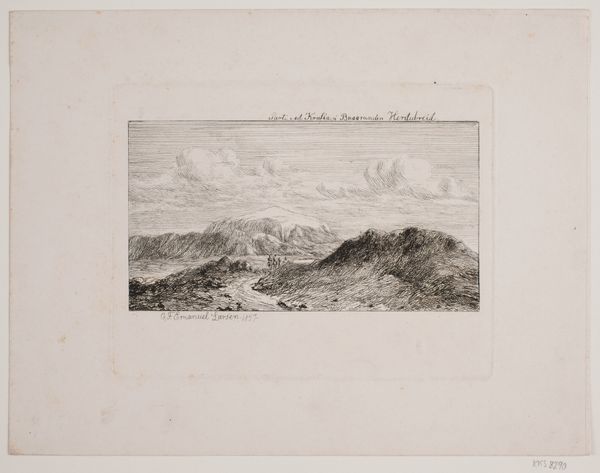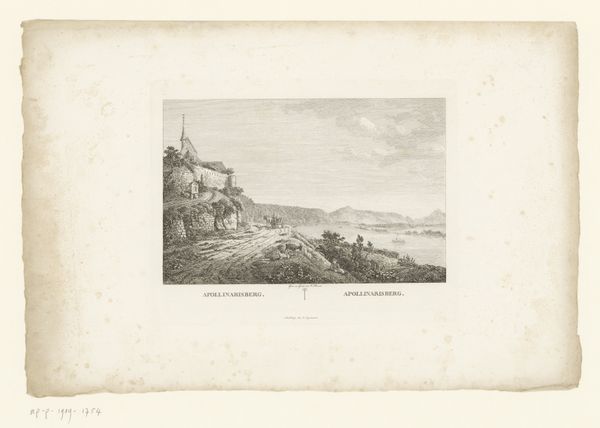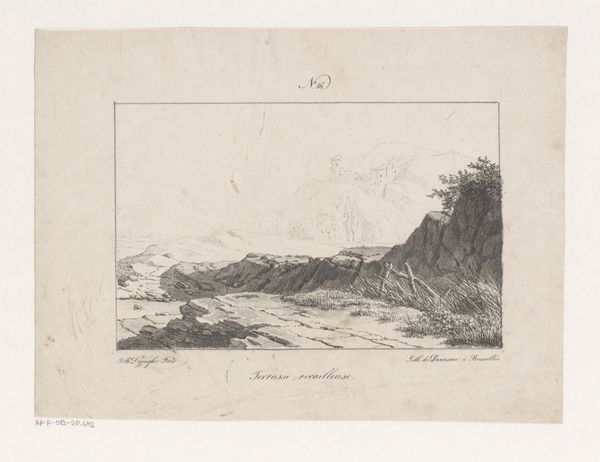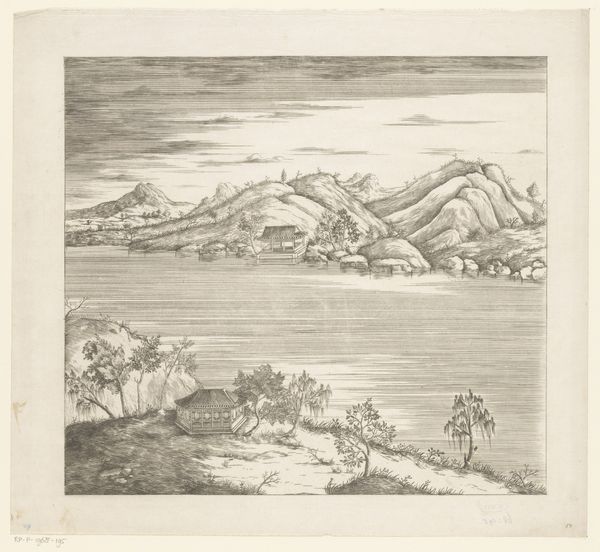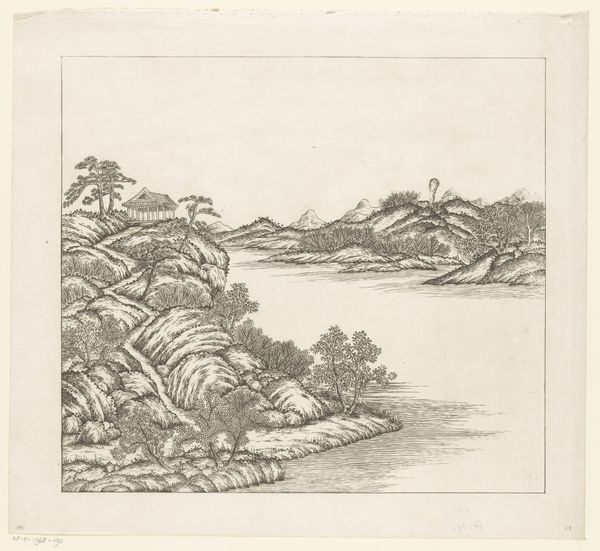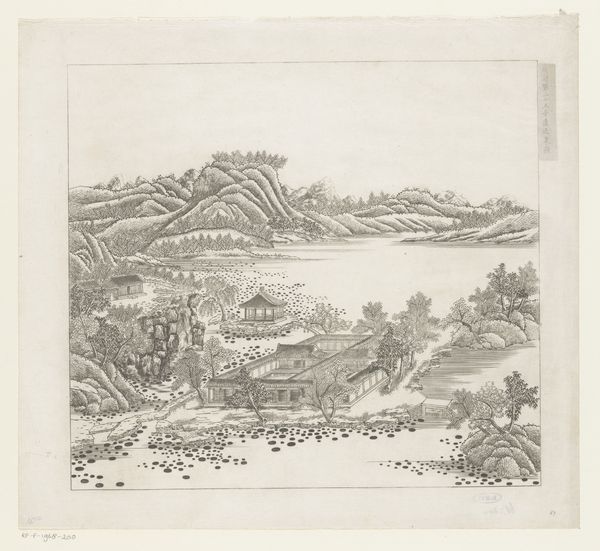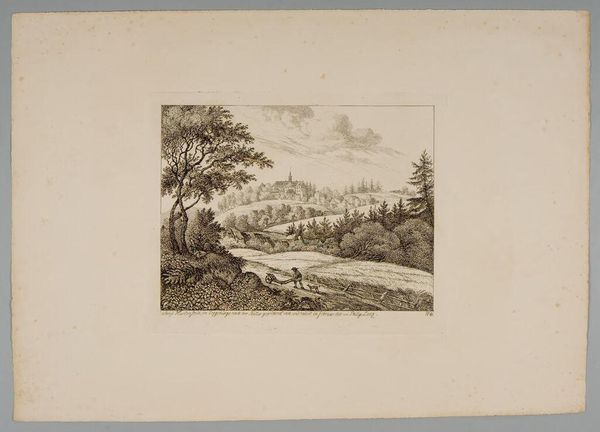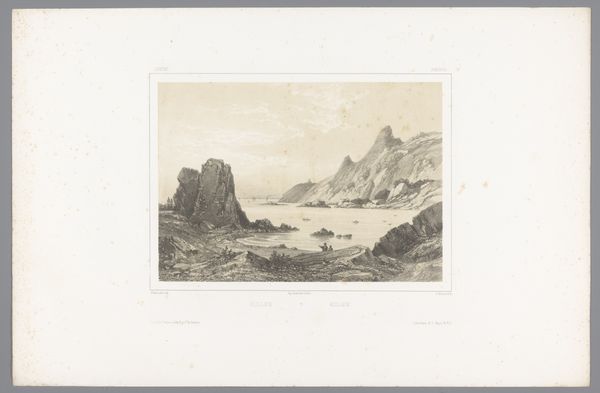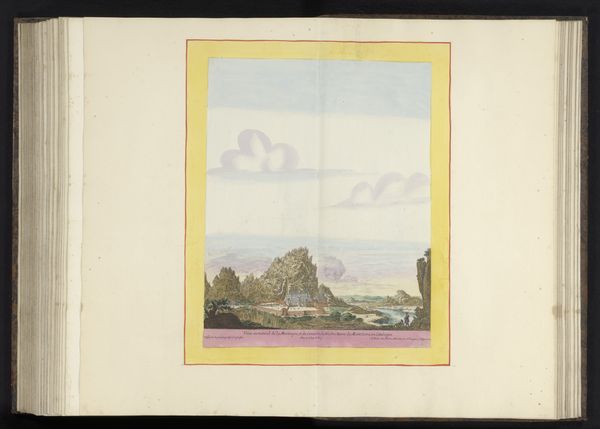
Kaart van Pulau Seram en Pulau Buru met daaronder een gezicht op een van de eilanden vanaf de Straat Ceram 1818
0:00
0:00
drawing, print, paper
#
drawing
# print
#
landscape
#
paper
#
geometric
#
romanticism
#
orientalism
Dimensions: height 378 mm, width 533 mm
Copyright: Rijks Museum: Open Domain
Editor: Here we have "Kaart van Pulau Seram en Pulau Buru met daaronder een gezicht op een van de eilanden vanaf de Straat Ceram," a drawing and print on paper made around 1818 by C. van Baarsel en Zoon. It depicts a map above an island landscape, a rather interesting combination. What social narratives might we explore in this work? Curator: This piece offers a fascinating intersection of cartography and landscape art, firmly rooted in a colonial gaze. Maps were never neutral objects; they were instruments of power. How do you see the combination of map and landscape functioning in this image? Editor: Well, the map seems to assert a kind of objective control over the islands, while the landscape is romanticized, almost exoticized. Is that a common tension in art from this period? Curator: Absolutely. Think about who was commissioning these images. Often, it was the colonizers who wanted both to document their territorial reach, to literally put themselves on the map, and to visually consume the beauty, supposedly for scientific record but often reflecting their own biases. This Orientalist approach often reduces the local population and culture to mere set pieces in the landscape, a way to signal dominance. How might local populations have reacted to these kinds of representations? Editor: I imagine with a great deal of resentment and perhaps resistance, considering their own experiences were being ignored or misrepresented. Was there pushback against these artistic portrayals? Curator: Yes, in subtle and overt ways. Local artistic traditions often developed in parallel, offering alternative visions of their lands and identities. The act of representation became, and remains, a key site of struggle. Considering that, how does this knowledge shift your initial view of the artwork? Editor: It definitely makes me more critical of its perspective and aware of what it omits. Curator: Exactly! And that’s how we start to deconstruct the narratives that these images perpetuate.
Comments
No comments
Be the first to comment and join the conversation on the ultimate creative platform.
